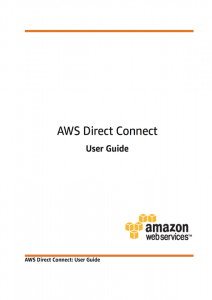Cloud Connectivity: It’s probably safe to say that enterprise, private and hybrid cloud are here to stay. These services have vastly improved the way in which we deliver resources, support new types of users, and create new types of business strategies. Continuing growth in adoption of public services means that even the most risk averse organisations are looking at the many ways to leverage cloud computing environments to help their businesses become much more agile. Spending on cloud network, infrastructure and platform could rise to around $203 billion by 2020, according to the IDC Worldwide Semiannual Public Cloud Services Spending Guide. Admittedly, the same report suggests that only around 5% of total worldwide technology expenditure in 2017, $122 billion, will be cloud related. Some of the rest of the $2.4 trillion will be from traditional in-house delivery, consumers (20%) and tellingly from software (20%). It stands to reason a proportion of the expenditure will be on Cloud Connectivity.
One of the main barriers regarding adoption is security, along with reliability, access and compliance related to data location. These issues raise the perfectly legitimate concern of “How do I create a cloud connectivity strategy that will allow me to leverage my on-premise investment and public architecture?”
What is Cloud Connectivity?
Cloud connectivity enables the interoperability between on-premise resources and public environments. The on-premise environment can be a branch office, the IT services division, a third party data centre with colocated equipment, or a major enterprise data centre. The obvious goal is to create an optimal cloud network strategy, where the business can adjust or scale according to demand whilst increasing security and availability coupled with decreasing expenditure.
Cloud connectivity uses a variety of secure, and high capacity (fast) connections, to enable organisations to integrate with cloud network, storage, compute, and end user environments. The greatest step forward has been the ease of creating these connections and how they can help transform a business. In the past, these connections were made manually and required a lot of know-how and administration. Today, major providers are offering far easier ways to integrate with your resources. Even further back, access to those resources was made available only via the Internet, which is inherently problematic from the perspective of security, availability and capacity. Think of cloud connectivity as the VIP entrance, avoiding traversing the Internet with everyone else.
Cloud Connectivity providers understand that you’ve made significant investment in your on-premise and data centre operations. They know that you’re probably not all that ready to rip everything out and move everything. This is why there have been some major initiatives regarding optimising the way businesses connect into the public cloud. These new solutions enable a far easier way to integrate on-premise resources with powerful cloud services. Ultimately, this helps businesses create faster, more reliable, and far more secure cloud network connections into their services using Cloud Connectivity.
Cloud Connect Explainer Video
Examples of Cloud Connectivity:
AWS Direct Connect
Amazon Web Services is easily the most popular. They support compliance-based workloads, integrate with complex storage environments, and even provide new types of workload delivery methodologies. More recently, Amazon has made it even easier to connect into its ecosystem without having to attempt to arrange a peering agreement between the customer network and the AWS public cloud network.
AWS Direct Connect enables a dedicated network connection between the customer network and an AWS Direct Connect location. It uses industry standard 802.1q VLANs, so that the dedicated connection can be partitioned into multiple virtual interfaces.. This allows you to use the same connection to access public resources, objects stored in Amazon S3 using public IP address space for example. Along with private resources, such as Amazon EC2 instances running within an Amazon Virtual Private Cloud using private IP address space. All whilst maintaining total network separation between public and private environments. Virtual interfaces can be reconfigured at any time and on the fly in order to meet your changing needs.
This kind of enterprise cloud connectivity comes with very real business benefits:
- Bandwidth controls regarding cost and delivery
- Higher Service Level Agreements (SLAs) for consistent cloud network performance
- Fully integrated with all AWS services
- Greater levels of business and data centre elasticity
If you’re integrating with an AWS environment, make sure to look at AWS Direct Connect. It allows your organisation to directly align with a specific strategy, which can be an all-encompassing extension into the AWS, or you can use a specific AWS service, such as integrating with Amazon S3 storage. The best part is that Direct Connect helps ease the adoption of your specific use case securely and privately.
Microsoft Azure ExpressRoute
Microsoft Azure ExpressRoute allows you to create private connections between Azure data centres and on-premise infrastructure inside your network, be it your data centre or a colocation. Microsoft ExpressRoute connections do not go over the public Internet. The connection architecture allows for far greater reliability, higher capacity (speed), much lower latency, and significantly more security than typical internet connections. Each Microsoft ExpressRoute circuit consists of two connections to two Microsoft Enterprise cloud network edge routers from the cloud connectivity provider and your network edge which requires optional dual BGP connections from the connectivity provider and your network side.
Using ExpressRoute connections to transfer data between on-premise systems and Azure can yield significant cost benefits. For example, you can establish connections to Azure at an ExpressRoute location, such as an exchange provider facility, or directly connect to Azure from your existing WAN network, such as a multi-protocol label switching (MPLS) VPN provided by a network service provider.
There are several benefits to using this type of cloud connectivity:
- Data centre and services extension
- Building an ecosystem for hybrid applications
- Creating an architecture build on auto-scaling and provisioning
- Integrating Active Directory services across multiple locations
With Microsoft ExpressRoute, you can establish connections to additional Microsoft services, not only Azure. These include services such as Office 365, Skype for Business and CRM Online. Connectivity can be from an any-to-any (IP VPN) network, a point-to-point Ethernet network, a VLAN via Smart Network or a virtual cross-connection through a connectivity provider at a colocation facility.
Google Cloud Interconnect
Google Cloud Interconnect enables you to connect your infrastructure to Google, via enterprise-grade connections to Google’s cloud network edge. The connections are offered by Google Interconnect service providers in order to connect. Google Interconnect will enable your infrastructure to connect to Google Platform Services with higher availability and lower latency connections.
Google Interconnect allows Google Platform Services customers to connect to Google via enterprise-grade connections with higher availability and lower latency than existing Internet connections. Connections are offered by Google Interconnect service provider partners, and offer higher SLAs than standard Internet connections. Google also supports direct connections to its cloud network through direct peering. Customers who cannot meet Google at its peering locations, or do not meet peering requirements, may benefit from Google Interconnect.
The flexibility of the Google Platform with cloud connectivity enables many business benefits:
- Great for data intensive applications
- Lower latency access to platform services
- Reduced cost with up to 50% reduction on Egress pricing
- Direct peering at over 75 locations in 33 countriles
Google Interconnect links can be used to access any of the Google Platform resources: Google Compute Engine, Google Storage, Google BigQuery, etc. You can even extend your private network into your private Compute Engine network over Google Interconnect links by using a VPN tunnel between the networks.
Oracle FastConnect
FastConnect addresses one of the most important issues that affect migration to a cloud service: the unpredictable nature of the Internet. With FastConnect, you can create a high-speed, dedicated, and low-latency extension that allows you to reap the benefits of a true hybrid setup. It also offers better security than exchanging your data over the Internet.
Oracle Network Service also offers Site-to-Site VPN for Dedicated Compute customers. FastConnect is for all Oracle Cloud customers. Site-to-Site VPN securely extends your on-premises network to your dedicated Oracle Compute zone. FastConnect provides a high bandwidth connection between your data centre and Oracle services.
There are many benefits to FastConnect for cloud connectivity:
- Get a faster and more secure connection to Oracle
- Pay less for predictable performance
- Get a redundant connection, so your traffic can quickly fail over in case of network failures
- Connect your data centre to Oracle in a few simple clicks
If you are colocated in the same datacenter as Oracle, you can establish connectivity by provisioning direct single mode fibre cross-connects from your datacenter provider. It also offers better security than exchanging your data over the Internet. With FastConnect-Standard Edition, you are connecting your edge routers directly to the Oracle cloud network edge routers in the specific location and establish a BGP peering session directly with Oracle.
HP Enterprise Rapid Connect
HPE Rapid Connect enables you to bypass the public internet when it connects to HPE Helion Managed Services. The new direct connectivity gives customers access to HPE’s portfolio of services when they need to build and consume computing workloads. It gives businesses more reliable and secure access, better performance and lower latency.
The flexibility of HPE Helion in tandem with Hyoer Converged Appliances is not to be ignored:
- Great for extension of existing assets
- Significantly improved latency between cloud network and on-premise
- On-demand access to compute as an extension
- Increasing availability at Ingress locations
HPE Helion is a portfolio of software, integrated systems, and services for computing, including distributions of OpenStack® and Cloud Foundry®. HPE Helion makes it easier for you to build, manage, and consume workloads in a hybrid IT environment that includes private and public clouds working in tandem with your on-premises systems.
And Finally . . .
There are many more Cloud Connectivity options, including BlueJeans, Box, Cisco, CSC, IBM, Salesforce, Sungard and VMware. Many of the Tier 1 network providers, whether they be Telecoms or Data Centre, can implement interconnects, known as XConnects, between their cloud network edge routers and your network edge. Additionally backhaul via VLAN through your existing Ethernet Fibre, depending upon provider, will be available.
Serviceteam IT can supply interconnects and backhaul from almost all of the providers, at wholesale rates, and link connections between different carriers and service providers together. Our Smart Network service is the most effective option for connecting.













Trackbacks & Pingbacks
[…] I’ve covered before, in Cloud Connectivity Providers Explained, Azure ExpressRoute is a service that enables customers to create private connections between […]
Leave a Reply
Want to join the discussion?Feel free to contribute!